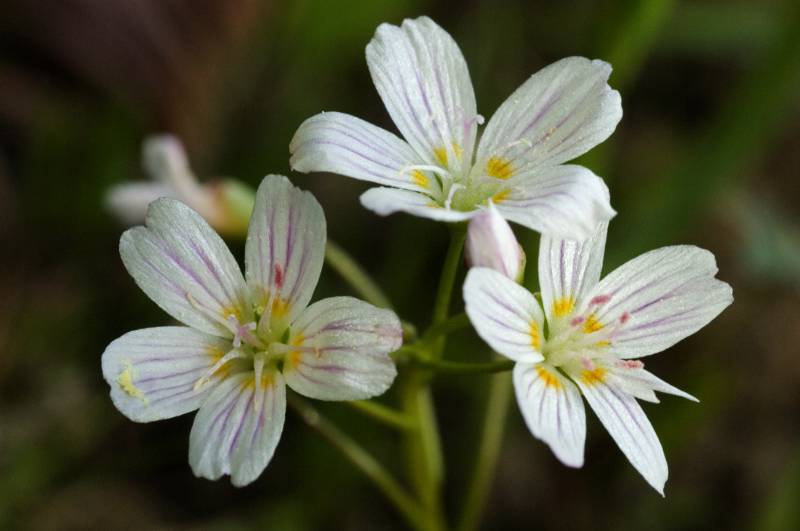Claytonia caroliniana
Claytonia lanceolata
lanceleaf springbeauty
Basal leaves 1 or 2, or often several, narrowly to broadly oblanceolate, up to 15 cm. long and 2-15 mm. wide;
cauline leaves 2, opposite, sessile, ovate to narrowly lanceolate, 1.5-6 cm. long and 5-20 mm. wide.
Inflorescence a loose, one-sided, 3- to 20- flowered raceme, bracteate below;
pedicels 1-5 cm. long, arched;
sepals 2, 2.5-5 mm. long;
petals 5, white to deep pink, often with pink lines, occasionally yellow, 5-12 mm. long, attached at the base for 1-2 mm;
stamens 5, attached to the base of the petals;
styles 3.
Capsule ovoid, 4 cm. long.
Claytonia caroliniana
Claytonia lanceolata
Occurring chiefly east of the Cascades crest in Washington; British Columbia to California, east to the Rocky Mountains and Sasketchewan.
- Local floras:
BC,
CA,
OR,
WA
- Local Web sites:
CalFlora,
CalPhotos,
Flora NW,
PNW Herbaria,
Turner Photog.
WildflowerSearch
iNaturalist (observations)
USDA Plants Database
- LBJ Wildflower Center
- SEINet
- Plants of the World Online
- Encyclopedia of Life
- Wikipedia
- Google Image Search


